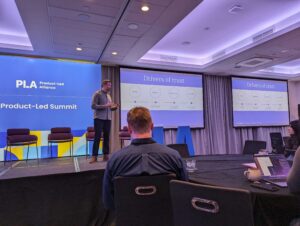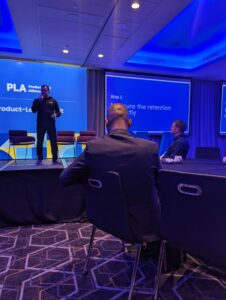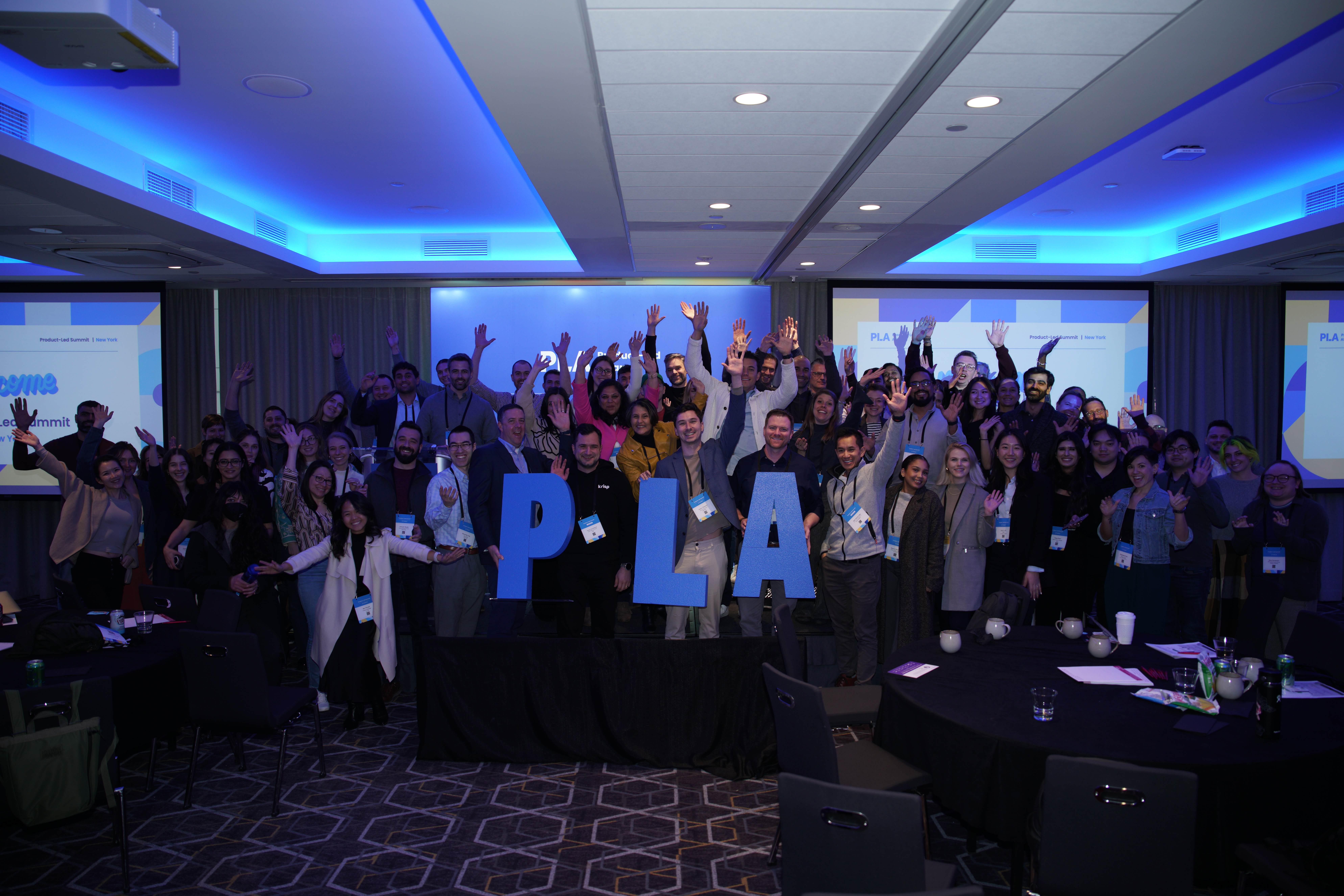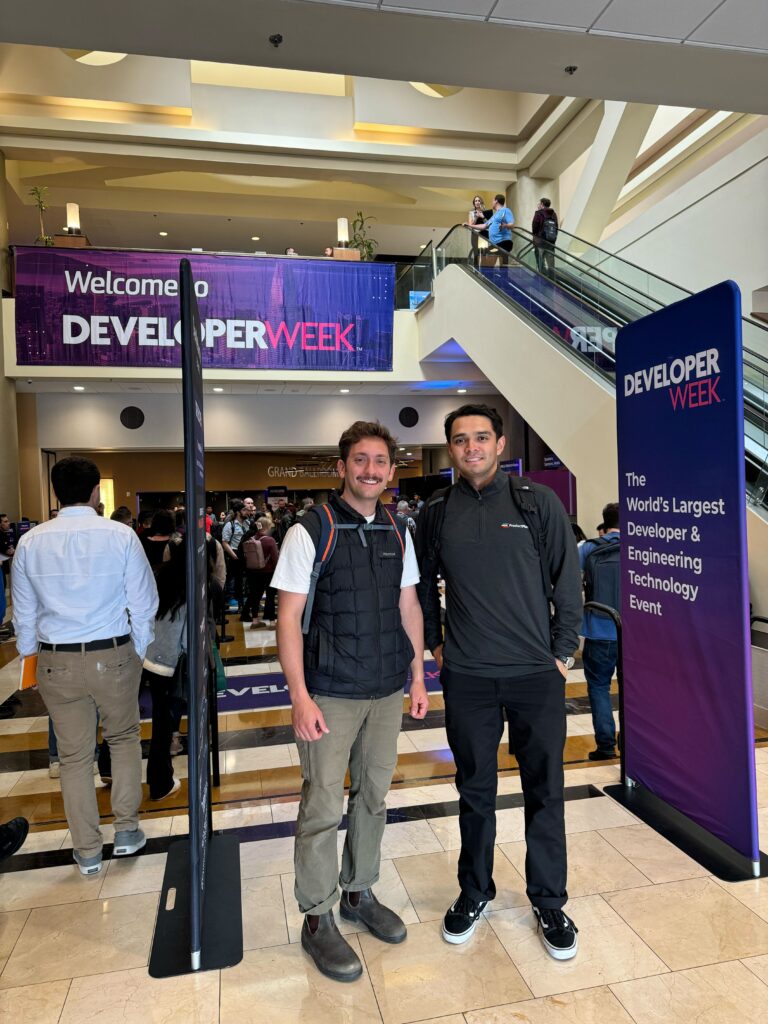As a product manager, attending conferences is not just a part of professional development but an invaluable source of inspiration and learning. Recently, I had the opportunity to attend the Product-Led Summit hosted by the Product-Led Alliance in New York.
During the conference, I immersed myself in the world of product and attended various sessions that provided me with unique perspectives. The learnings from the presentations were applicable to my role and relevant to the problems and themes that our users face on a daily basis.
Amidst the excitement of innovative ideas and networking, I returned with invaluable insights that I’m eager to pass on to my fellow product enthusiasts and aspiring product professionals. There were many enlightening sessions throughout the event, but here are some takeaways from three that really resonated with me.
1. Understand how you are generating trust with your audience.
Sam Bradley, Director of Product Management at PayPal, presented on “The Trust Factor” in Product. He shared that trust has four core drivers: security, reliability, benevolence, and connections.
- Security focuses on whether the product is safe and reliable to interact with. Customers want to know: is this brand safe? A lack of security is considered a severe detractor of trust and should be taken seriously.
- Reliability focuses on the integrity of the product. Many customers will consider whether the brand has integrity before making a purchasing decision. In Sam’s experience, customers consider PayPal secure and reliable, making purchasing decisions more straightforward when they see a “Checkout with PayPal” option when shopping online.
- Benevolence represents whether the product appears to put the customer’s interests first. Is the product created with the well-meaning intent to solve a problem for its customers?
- Connection signals whether the audience feels a bond with the product or brand. Appealing to the customer’s emotions can be a powerful driving force. Customers may look at a brand’s image and community before purchasing.
Identifying which drivers your product uses to build trust with your customers is crucial. Product teams must be able to successfully measure how they signal to customers that it is clearly understood and feel that the product is trustworthy.
It is easy to break trust with a customer base and can be very difficult to repair. However, it is essential to note that if something goes wrong, controlling your reaction to that moment and rebuilding well can build an even stronger bond between you and your audience.

2. Create collaborative rituals to ensure internal alignment early and frequently.
Teresa de Figueiredo, Product Manager at Coda, presented “Rituals for Effective Planning and Collaboration.”
As with any product development process, it can take time to ensure internal alignment between many different layers of teams. Teresa’s top three collaboration rituals are early alignment, transparently sharing project updates, and easily interpreting feedback.
One way that Teresa practices driving early alignment from leadership is by using proactive prompts in the design phase. To foster productive discussion, ask questions like:
What are you excited about?
What are you feeling uneasy about?
These clearly defined discussion points help gain alignment with stakeholders and leadership by making entry to discussion easier. The discussion is also a great time to clarify how involved stakeholders want to be. Do they want to be involved in each step or just to be brought in for significant milestones?
During the execution phase, Teresa recommends having a single source of truth for status updates on any project activity. Ideally, this solution is accessible and user-friendly so that team members can easily see the status of tasks and if a blocker has appeared. A solution, like a product management platform, streamlines communication by preventing unnecessary update notifications and emails. Of course, we recommend ProductPlan as your single source of truth!
Now, your team has reached the retrospective phase. Interpreting and acting on feedback is critical, but this doesn’t always happen as smoothly as you may like. Someone may leave a vague comment on a retrospective board that a feature “felt awkward,” but what does this mean? Do other people agree? Controlling volume is a way to ensure people understand feedback and to reduce noise.
As a product manager, your role is to digest feedback and synthesize comments into broader statements with which other team members can quickly agree or disagree. Team members are likely saying the same thing, and it’s your role to help clarify these comments.

Photo Source: Product-Led Alliance
3. Use psychology to help your audience understand the value you bring to their life.
Karapet Gyumjibashyan, Senior Director of Product at Krisp, discussed “Communicating Value to Voice AI Products.” His session focused on how Krisp, a company that provides an AI meeting assistant to cancel noise and summarize meetings, used psychology and data to increase retention.
Retention is a value game, and there are three ways to convey this to customers:
- Show the value
- Make the engagement valuable
- Provide value over time
In Karapet’s example, Krisp faced a challenge where although customers were getting their noise reduced, only the people on the other end of the call were experiencing the benefits and hearing the filtered sound. The product team realized they had to find a way to make the customer understand the value they got from the product. To solve this problem, they implemented their version of a “habit loop”–a way to encourage improved daily use of the product and reward the user for using it.
The habit loop includes three components:
- Trigger
- Action
- Reward
Their trigger became an on-screen pop-up display announcing that Krisp was not set up properly and needed activation. Their action was another display that indicated that the product was active–allowing users to feel like they were interacting with the product along with the person on the other side of the call. For their reward, they created a display that shared statistics about performance: how many minutes required noise filtering, how loud or moderate the sound was, and how long the user talked.
After implementing this habit loop tool, Krisp saw a 43% increase in D14 retention. This framework is clearly helpful in communicating a product’s value to customers and encouraging them to return more regularly.

Looking ahead: The lasting impact of the Product-Led Summit.
Hearing from Product leaders across a wide range of industries was an exceptional opportunity that I don’t take for granted. I came back to ProductPlan better understanding the importance of customer trust, best practices for cross-departmental collaboration, and how psychology can play a role in product strategy.
Most importantly, the conference awakened a sense of community in me, as I realized that we, as product professionals, are all working towards a shared goal of personal growth and the success of our products. Our team would love to connect and see how ProductPlan can also help you and your organization’s goal of launching a successful product. Contact us to learn more.



